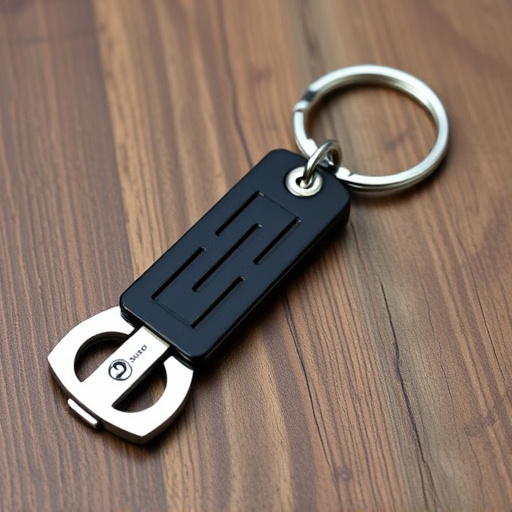The Kubotan, a compact self-defense keychain, offers strategic strike points (eyes, throat, groin, knees) for effective personal protection. Its high-quality materials and portable design make it an appealing option for individuals seeking safety on the go. Mastering Kubotan techniques through regular training and practice drills is crucial for deploying the tool effectively in diverse scenarios.
In today’s world, personal safety is paramount. One innovative tool gaining traction as a basic protection device is the keychain safety tool, notably the Kubotan. This compact self-defense device offers users added peace of mind in bustling environments. Our guide delves into the essential aspects of keychain safety tools, focusing on the Kubotan concept, its key components, and effective strike points for maximum protection. Learn how to master your defense skills through training and practice drills, ensuring you’re prepared for any unexpected situation.
- Understanding Keychain Safety Tools: The Kubotan Concept
- Key Components of a Kubotan: Materials and Design
- Effective Kubotan Strike Points: Targeting Vital Areas for Protection
- Training and Practice Drills: Mastering Your Keychain Defense Skills
Understanding Keychain Safety Tools: The Kubotan Concept
Keychain safety tools, like the Kubotan, have gained popularity as a means of personal defense for individuals seeking basic protection. This innovative device is designed to be compact and easily carryable, fitting comfortably on one’s keychain. The Kubotan concept revolves around providing users with a tactical advantage in potentially dangerous situations, offering multiple strike points for self-defense.
The effectiveness of a Kubotan lies in its strategic design, featuring various hard surfaces that can be utilized as impact areas. These include the tip, side edges, and ring, all engineered to inflict pain and disrupt an attacker’s grip or balance. Understanding the effective Kubotan keychain strike points empowers users to respond swiftly and decisively, potentially deterring threats and allowing for a chance to escape.
Key Components of a Kubotan: Materials and Design
A Kubotan, often referred to as a self-defense key chain, is designed for basic protection and ease of use in unexpected situations. The key components of a Kubotan include its materials and design, both of which play crucial roles in its effectiveness. High-quality materials like stainless steel or aluminum alloy ensure durability and resistance, allowing the Kubotan to withstand regular use and potential impacts. The design typically incorporates various strike points strategically placed along the body, including sharp edges and rounded corners, making it versatile for different self-defense scenarios.
These strike points are specifically designed to deliver effective force with minimal effort, enabling users to defend themselves against potential attackers. The compact size and key chain attachment make it easily portable, ensuring that you carry a layer of personal safety wherever you go. This accessibility is particularly appealing for individuals who prioritize being prepared but have space constraints on their keys.
Effective Kubotan Strike Points: Targeting Vital Areas for Protection
When using a Kubotan keychain for self-defense, understanding effective strike points is key to maximizing protection. The tool is designed to target pressure points on an attacker’s body, incapacitating them long enough for you to escape. Focus on areas like the eyes, throat, groin, and knees—these are all vital spots that, when hit with sufficient force, can temporarily disable an assailant.
The Kubotan’s design allows for precise, concentrated pressure, making it easier to land effective strikes. Practice targeting these areas regularly during self-defense training to ensure you can deploy the tool effectively in a real-life scenario. Remember, the goal is to cause pain and disrupt balance, not inflict serious injury—a swift and strategic strike is often all it takes to gain control of a potentially dangerous situation.
Training and Practice Drills: Mastering Your Keychain Defense Skills
Training and practice drills are an essential part of mastering your Kubotan keychain defense skills. Start by familiarizing yourself with the tool’s various strike points, focusing on effective Kubotan keychain strike points designed to cause discomfort or disarm an attacker. Regularly practice these techniques against a resistant surface to simulate real-life scenarios.
Incorporate different grip positions and hand movements to ensure you can access the necessary strike points quickly and accurately under pressure. Consider setting up obstacle courses or practicing with a partner to enhance your agility and reaction time, enabling you to defend yourself effectively in various situations.
In conclusion, understanding the basic concepts of keychain safety tools, like the Kubotan, is a powerful step towards personal protection. By familiarizing yourself with its key components and effective strike points, you can turn this compact tool into a valuable asset for your security. Regular training and practice drills will ensure you’re prepared to defend yourself in unexpected situations. Remember, knowledge and skill are the ultimate barriers to potential threats, making the Kubotan a smart choice for anyone seeking basic protection.
